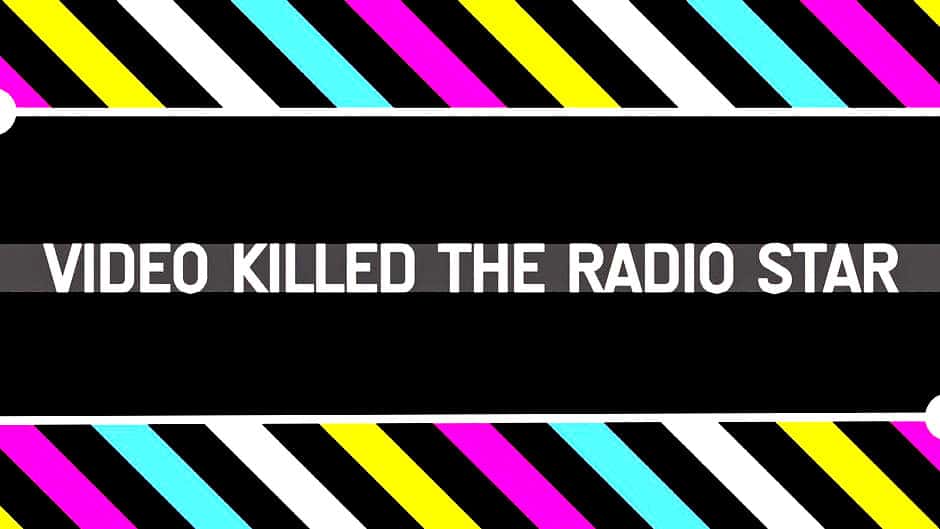Video Killed the Radio Star…
Are video interviews harder to get through?
By: Vincent Scaramuzzo, President, Ed-Exec, Inc.
In a word – Yes. I do believe video interviews present challenges for both hiring managers and candidates alike.
The Technology: We all know that even with a rock solid WiFi Connection video interviews can be choppy, echo a lot, have lighting issues, and other technical issues that are really detriments to the process. When this happens people naturally get frustrated and annoyed. These feelings can easily translate to your thoughts on a candidate or hiring company and really influence the results. We unofficially track it at my firm and I’d estimate that over 75% of the time candidates are not invited to the next round of interviews when there is a technical problem.
It’s awkward: Have you ever listened to a recording of yourself? Hearing your own voice is one of the more uncomfortable things to do. We sound different and it is so easy to be critical of how we say things. Put that to video and you can multiply the uncomfortableness and self-criticism tenfold. Rather than focusing on the interview and the questions being asked/answered we are self-consciously looking at ourselves. “Do I look right? Am I looking at them? Wow this lighting is horrible…It is also hard to tell if you are making good eye contact via video.
Lack of Practice: This is probably the biggest disconnect with Video Interviews. We just haven’t done them enough. We’ve handled dozens of conference calls. Endless one on one phone interviews, but video interviews are still a relatively new format and until recently the accessibility and reliability did not exist like it does now. It is going to take time for both sides to get really good at video interviews.
If you are going to be part of a video interview here are some helpful tips:
- Practice with a friend or family member to make sure your software, hardware, etc. all work well. If there is going to be a technological problem on the call don’t let it be on your end. It could lead the person on the other end to perceive you are not well versed with the latest equipment and software.
- Make sure your camera angle is flattering and well lit. The placement of your webcam is one of the most important contributors to your professional look on camera. The height of the web am should be roughly eye level. The best option for the angle of the webcam is pointing down rather than pointing up under your chin. Be sure it’s not too close to your face, or too far away: A head and shoulders shot is most appropriate.
- Keep the area behind you clear. Nothing distracting should be in view. Be sure you are alone. Someone coming into your office unannounced or your kids flying into the picture during a virtual interview probably won’t go over well. I think there are a few videos like this circulating on YouTube that are quite comical. Don’t forget to make sure Fido or Garfield don’t jump into the picture!
- Look into the webcam during your interview to maintain eye contact; just like you would in an in-person meeting.
- Listen carefully not to miss any questions. Make sure you are in a very quiet place to help eliminate unnecessary background noise.
- Dress to Impress just like you would for a live meeting. Wear conservative colors, such as blue or black, and avoid busy patterns and noisy jewelry – none work well on video.
- Do: Wear solid colors. Blues/natural tones convey calm authority.
- Do: Wear a blazer. Blazers make both women and men look put-together and prepared.
- Don’t: Wear high-contrast clothing (bold suits/patterns like pinstripes, polka dots, and other patterns). These clothes won’t show well on camera.
- Don’t: Wear large, flashy, distracting jewelry such as large earrings, loud bangles, or distracting necklaces.
- Do: Use your best judgement on clothing choices. Keep in mind the culture of the place to which you’ve applied, and let that help with your decision.
- Stay still. Unnecessary movements may distract people and use up more bandwidth. Your body language and your temperament show through on video. Crossing your arms over your chest or wringing your hands will show that you are nervous and perhaps not fully sure you are a good fit for the role. Instead, place your hands quietly on the table or in your lap, lean slightly forward into the camera and make friendly eye-contact with your interviewers.
- Finally treat this like a traditional interview. Show your new potential employer you are serious about the job by preparing for a video interview with as much as care as you would a traditional interview: dress well, research questions for the interviewer about the company and position, etc.
Video interviews can be more challenging than traditional phone interviews. Whenever possible I would opt for the phone interview as long as it does not put off the potential hiring company. Until everyone’s comfort level with these formats increases it is likely your highest odds of success. But if you do have to interview or hire someone via video try the tips listed for a smoother experience.
Vincent Scaramuzzo is the President of Ed-Exec, Inc. A leading Education Executive Search Firm. He is also a contributing author to various education publications. As a specialist in the education field for over a decade, Scaramuzzo works nationally with Education Institutions, PK-12, and Educational Service Providers Nationwide. He can be contacted at vincent@ed-exec.com 860-781-7641.

Just a follow-up to this. Technical gliches continue to plaque video interviews (especially on SKYPE). I highly recommend some other services.
Consistently now if there is a technical issue the candidate is not advanced in the process!